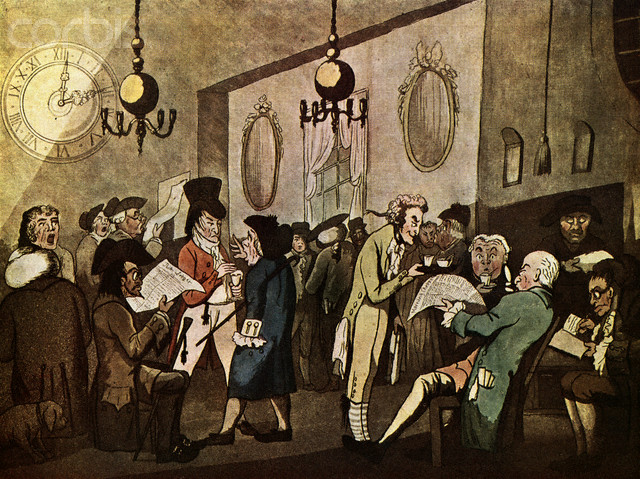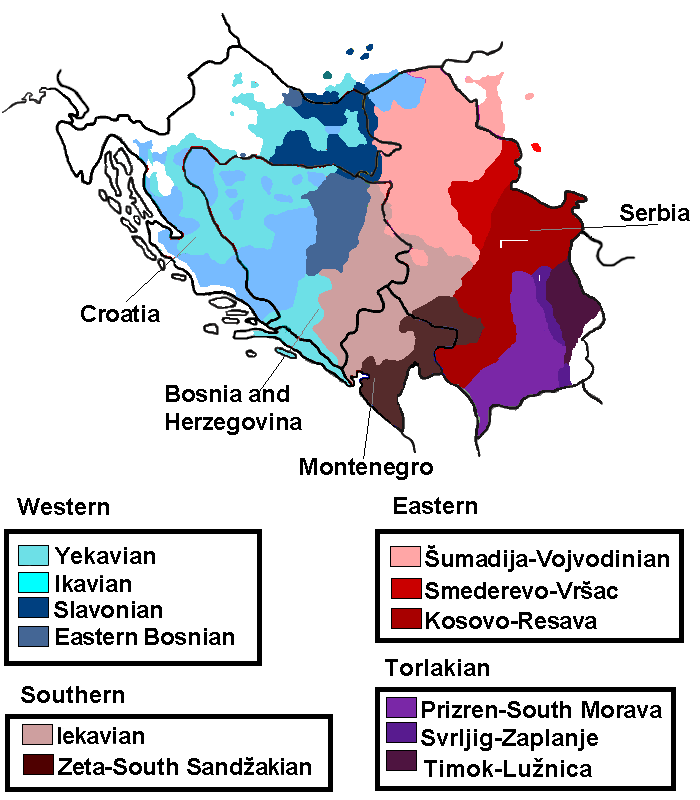|
Teša Tešanović
Teša Tešanović (; born 17 May 1988) is a Serbian journalist and TV host who founded Balkan Info'','' an independent Serbian talk show. Biography Tešanović was born in 1988 in Vršac, in Socialist Republic of Serbia, which at the time was part of the Socialist Federal Republic of Yugoslavia. He studied philosophy at the Faculty of Philosophy at the University of Belgrade. He is the founder of a YouTube television and talk show ''Balkan Info'' from Belgrade, where he has been working since 2015. Together with Aleksandar Pavković, Nemanja Blagojević and Nemanja Oblaković, he is one of the hosts on this internet television. The channel has gained wide popularity as a leading alternative media outlet, providing diverse content from controversial coverage of current affairs to popular culture and entertainment. It was the first media of this kind to emerge in Serbia and has exerted major influence on public life, repeatedly reaching over one million views on YouTube. Tešan ... [...More Info...] [...Related Items...] OR: [Wikipedia] [Google] [Baidu] |
Vršac
Vršac ( sr-Cyrl, Вршац, ) is a city in the autonomous province of Vojvodina, Serbia. As of 2022, the city urban area had a population of 31,946, while the city administrative area had 45,462 inhabitants. It is located in the geographical region of Banat. Etymology The name ''Vršac'' is of Serbian origin, ultimately deriving from Proto-Slavic *vьrxъ, meaning "summit". In Serbian, the city is known as Вршац or ''Vršac'', in Romanian as ''Vârșeț'' or Vîrșeț, in Hungarian as ''Versec'' or ''Versecz'', in German as ''Werschetz'', and in Turkish as ''Virşac'' or ''Verşe''. History The uniqueness of Vršac is reflected in the fact that it has been inhabited since the dawn of the first cultures. Thus, the oldest traces of human presence in Banat originate precisely from Vršac, since individual finds of Paleolithic flint tools from the middle and younger Paleolithic, Mousterian and Aurignacian cultures were found on the slopes of the Vršac Mountains. Th ... [...More Info...] [...Related Items...] OR: [Wikipedia] [Google] [Baidu] |
Alternative Media
Alternative media are media sources that differ from established forms of media, such as mainstream media or mass media, in terms of their content, production, or distribution.Downing, John (2001). ''Radical Media''. Thousand Oaks, CA: Sage Publications. Alternative media includes many formats, including print, audio, film/video, online/digital and street art, among others. Some examples include the counter-culture zines of the 1960s, ethnic and indigenous media such as the First People's television network in Canada (later rebranded Aboriginal Peoples Television Network), and more recently online open publishing journalism sites such as Indymedia. Sometimes the term ''independent media'' is used as a synonym, indicating independence from large media corporations. However, the term "independent media" generally has a different meaning, indicating freedom of the press and independence from government control. In contrast to the mainstream media, alternative media tend to be " ... [...More Info...] [...Related Items...] OR: [Wikipedia] [Google] [Baidu] |
Serbian Entertainers
Serbian may refer to: * Pertaining to Serbia in Southeast Europe; in particular **Serbs, a South Slavic ethnic group native to the Balkans ** Serbian language ** Serbian culture **Demographics of Serbia, includes other ethnic groups within the country *Pertaining to other places **Serbia (other) **Sorbia (other) *Gabe Serbian (1977–2022), American musician See also * * * Sorbs * Old Serbian (other) Old Serbian may refer to: * someone or something related to the Old Serbia, a historical region * Old Serbian language, a general term for the pre-modern variants of Serbian language, including: ** the Serbian recension of Old Church Slavonic la ... {{Disambiguation Language and nationality disambiguation pages ... [...More Info...] [...Related Items...] OR: [Wikipedia] [Google] [Baidu] |
People From Vršac
The term "the people" refers to the public or common mass of people of a polity. As such it is a concept of human rights law, international law as well as constitutional law, particularly used for claims of popular sovereignty. In contrast, a people is any plurality of persons considered as a whole. Used in politics and law, the term "a people" refers to the collective or community of an ethnic group or nation. Concepts Legal Chapter One, Article One of the Charter of the United Nations states that "peoples" have the right to self-determination. Though the mere status as peoples and the right to self-determination, as for example in the case of Indigenous peoples (''peoples'', as in all groups of indigenous people, not merely all indigenous persons as in ''indigenous people''), does not automatically provide for independent sovereignty and therefore secession. Indeed, judge Ivor Jennings identified the inherent problems in the right of "peoples" to self-determination, as i ... [...More Info...] [...Related Items...] OR: [Wikipedia] [Google] [Baidu] |
Living People
Purpose: Because living persons may suffer personal harm from inappropriate information, we should watch their articles carefully. By adding an article to this category, it marks them with a notice about sources whenever someone tries to edit them, to remind them of WP:BLP (biographies of living persons) policy that these articles must maintain a neutral point of view, maintain factual accuracy, and be properly sourced. Recent changes to these articles are listed on Special:RecentChangesLinked/Living people. Organization: This category should not be sub-categorized. Entries are generally sorted by family name In many societies, a surname, family name, or last name is the mostly hereditary portion of one's personal name that indicates one's family. It is typically combined with a given name to form the full name of a person, although several give .... Maintenance: Individuals of advanced age (over 90), for whom there has been no new documentation in the last ten ... [...More Info...] [...Related Items...] OR: [Wikipedia] [Google] [Baidu] |
1988 Births
1988 was a crucial year in the early history of the Internet—it was the year of the first well-known computer virus, the 1988 Internet worm. The first permanent intercontinental Internet link was made between the United States (National Science Foundation Network) and Europe (Nordunet) as well as the first Internet-based chat protocol, Internet Relay Chat. The concept of the World Wide Web was first discussed at CERN in 1988. The Soviet Union began its major deconstructing towards a mixed economy at the beginning of 1988 and began its gradual dissolution. The Iron Curtain began to disintegrate in 1988 as Hungary began allowing freer travel to the Western world. The first extrasolar planet, Gamma Cephei Ab (confirmed in 2003), was detected this year and the World Health Organization began its mission to eradicate polio. Global warming also began to emerge as a more significant concern, with climate scientist James Hansen testifying before the U.S. Senate on the is ... [...More Info...] [...Related Items...] OR: [Wikipedia] [Google] [Baidu] |
Serbs
The Serbs ( sr-Cyr, Срби, Srbi, ) are a South Slavs, South Slavic ethnic group native to Southeastern Europe who share a common Serbian Cultural heritage, ancestry, Culture of Serbia, culture, History of Serbia, history, and Serbian language, language. They primarily live in Serbia, Kosovo, Bosnia and Herzegovina, Croatia, Montenegro as well as in North Macedonia, Slovenia, Germany and Austria. They also constitute a significant diaspora with several communities across Europe, the Americas and Oceania. The Serbs share many cultural traits with the rest of the peoples of Southeast Europe. They are predominantly Eastern Orthodoxy, Eastern Orthodox Christians by religion. The Serbian language, Serbian language (a standardized version of Serbo-Croatian) is official in Serbia, co-official in Kosovo and Bosnia and Herzegovina, and is spoken by the plurality in Montenegro. Ethnology The identity of Serbs is rooted in Eastern Orthodoxy and traditions. In the 19th century, the ... [...More Info...] [...Related Items...] OR: [Wikipedia] [Google] [Baidu] |
Greater Serbia
The term Greater Serbia or Great Serbia () describes the Serbian nationalist and irredentist ideology of the creation of a Serb state which would incorporate all regions of traditional significance to Serbs, a South Slavic ethnic group, including regions outside modern-day Serbia that are partly populated by Serbs. The initial movement's main ideology (Pan- Serbism) was to unite all Serbs (or all territory historically ruled, seen to be populated by, or perceived to be belonging to Serbs) into one state, claiming, depending on the version, different areas of many surrounding countries, regardless of non-Serb populations present. The Greater Serbian ideology includes claims to various territories aside from modern-day Serbia, including the whole of the former Yugoslavia except Slovenia and part of Croatia. According to Jozo Tomasevich, in some historical forms, Greater Serbian aspirations also included parts of Albania, Bulgaria, Hungary and Romania. Its inspiration comes fro ... [...More Info...] [...Related Items...] OR: [Wikipedia] [Google] [Baidu] |
Serbian Nationalism
Serbian nationalism asserts that Serbs are a nation and promotes the cultural and political unity of Serbs. It is an ethnic nationalism, originally arising in the context of the general rise of nationalism in the Balkans under Ottoman rule, under the influence of Serbian linguist Vuk Stefanović Karadžić and Serbian statesman Ilija Garašanin. Serbian nationalism was an important factor during the Balkan Wars which contributed to the decline of the Ottoman Empire, during and after World War I when it contributed to the dissolution of the Austro-Hungarian Empire, and again during the breakup of Yugoslavia and the Yugoslav Wars of the 1990s. After 1878, Serbian nationalists merged their goals with those of Yugoslavists, and emulated the Piedmont's leading role in the '' Risorgimento'' of Italy, by claiming that Serbia sought not only to unite all Serbs in one state, but that Serbia intended to be a South Slavic Piedmont that would unite all South Slavs in one state known ... [...More Info...] [...Related Items...] OR: [Wikipedia] [Google] [Baidu] |
Belgrade
Belgrade is the Capital city, capital and List of cities in Serbia, largest city of Serbia. It is located at the confluence of the Sava and Danube rivers and at the crossroads of the Pannonian Basin, Pannonian Plain and the Balkan Peninsula. The population of the Belgrade metropolitan area is 1,685,563 according to the 2022 census. It is one of the Balkans#Urbanization, major cities of Southeast Europe and the List of cities and towns on the river Danube, third-most populous city on the river Danube. Belgrade is one of the List of oldest continuously inhabited cities, oldest continuously inhabited cities in Europe and the world. One of the most important prehistoric cultures of Europe, the Vinča culture, evolved within the Belgrade area in the 6th millennium BC. In antiquity, Thracians, Thraco-Dacians inhabited the region and, after 279 BC, Celts settled the city, naming it ''Singidunum, Singidūn''. It was Roman Serbia, conquered by the Romans under the reign of Augustus and ... [...More Info...] [...Related Items...] OR: [Wikipedia] [Google] [Baidu] |
SR Serbia
The Socialist Republic of Serbia ( sh-Cyrl-Latn, separator=" / ", Социјалистичка Република Србија, Socijalistička Republika Srbija), previously known as the People's Republic of Serbia ( sh-Cyrl-Latn, separator=" / ", Народна Република Србија, Narodna Republika Srbija, National Republic of Serbia), commonly abbreviated as Republic of Serbia, SR Serbia or simply Serbia, was one of the six constituent republics of the Socialist Federal Republic of Yugoslavia in what is now the modern day states of Serbia and the disputed territory of Kosovo. Its formation was initiated in 1941, and achieved in 1944–1946, when it was established as a federated republic within Yugoslavia. In that form, it lasted until the constitutional reforms from 1990 to 1992, when it was reconstituted, as the Republic of Serbia within the Federal Republic of Yugoslavia. It was the largest constituent republic of Yugoslavia, in terms of population and territory ... [...More Info...] [...Related Items...] OR: [Wikipedia] [Google] [Baidu] |




